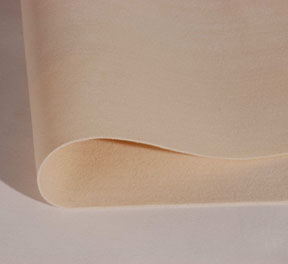-
- solid-liquid separation series
- industrial filter cloth
- filter press filter bag
- centrifuge filter bag
- leaf filter filter bag
- belt type filter press filter cloth
- flat fold filter filter cloth
- vertical disk filter filter bag
- flat filter filter cloth
- drum filter filter cloth
- suction filter filter bag
- liquid filter felt
- liquid filter bag
| Acrylic needle felt | |||||||||||||||||||||||||||||||||||||||||||||||||||||
| 2018/3/19 22:48:50 阅读次数:1174 | |||||||||||||||||||||||||||||||||||||||||||||||||||||
 |
|||||||||||||||||||||||||||||||||||||||||||||||||||||
Acrylic fibers used in the filtration industry generally refer to homopolymer acrylics. Acrylic (acrylic fiber) was invented by DuPont in 1950. Its appearance is round or figure-shaped. The surface is smooth, it is not easy to absorb water, it is resistant to acid and alkali and sunshine, and it is not easy to yellow and easy to dye. It is usually called poly. Acrylonitrile fiber. Acrylic fibers used in the filtration industry generally refer to homopolymer acrylics. Acrylic (acrylic fiber) was invented by DuPont in 1950. Its appearance is round or figure-shaped. The surface is smooth, it is not easy to absorb water, it is resistant to acid and alkali and sunshine, and it is not easy to yellow and easy to dye. It is usually called poly. Acrylonitrile fiber. Acrylic fiber itself is not very strong in strength. Generally, polyester filament base fabric or acrylic and polyester mixed base fabric is used to enhance the strength of the needle felt. Acrylic needle felt is a fine fiber cloth which adopts a non-woven process and uses acrylic reinforcing fibers to be staggered and has uniform pore distribution. The surface is treated by hot rolling and singeing to make the surface smooth and not easily blocked by dust. Acrylic needle felt The temperature is 140~160 degrees Celsius, it is the best medium temperature filter material with acid resistance, alkali resistance and hydrolysis resistance. Our factory uses imported acrylic fiber as raw material to make felt by needle punching method, and then through special oil-proof and waterproof treatment to obtain acrylic medium temperature anti-hydrolysis needle-punched filter felt .The filter material has excellent chemical resistance and hydrolysis resistance, and is widely used in dust collection of power plants, garbage incineration, asphalt, cement plants, coal mills, and the like.
|
|||||||||||||||||||||||||||||||||||||||||||||||||||||
| Previous:Mitt needle felt | next:无 | ||||||||||||||||||||||||||||||||||||||||||||||||||||



 chinese
chinese English
English
